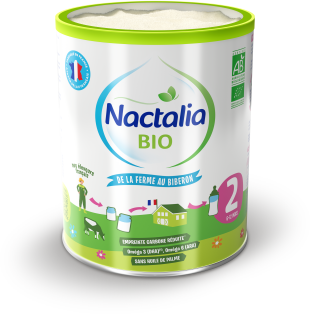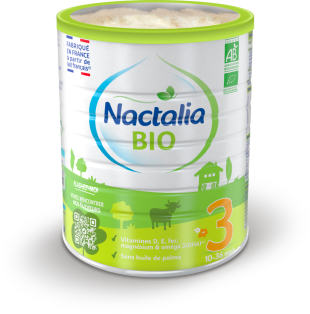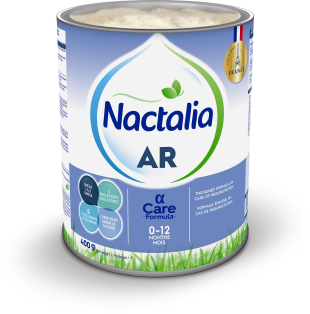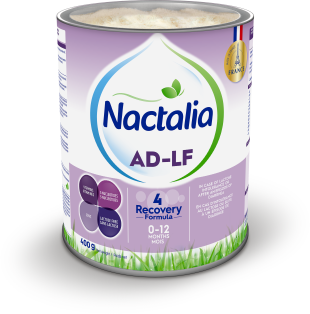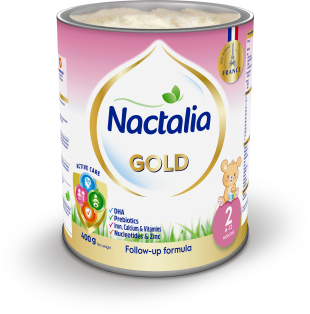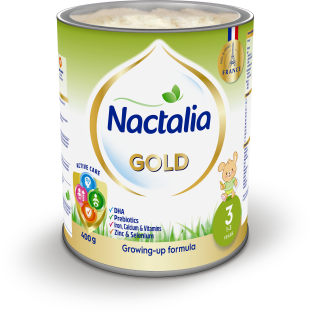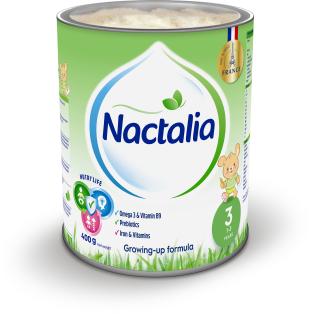
The importance of milk in a balanced diet
Calcium, vitamins, lipids… breastmilk, or failing that, infant formula milk suited to the age of the child are a vital source of nutrients for baby’s healthy development from birth up to the age of 3 and beyond. Consumed exclusively and then in addition to a varied diet, this milk is the bedrock of their diet. Here is an overview of the importance of milk and its benefits.
Never sideline milk
From their very first day, milk is an integral part of baby’s daily life. Breastmilk is ideal, but if the mother cannot or does not wish to breastfeed, it will be necessary to choose a milk formula suited to the child’s age. These milk formulas fulfil their nutritional requirements, both in terms of macronutrients (lipids, carbohydrates, proteins) and micro nutrients (vitamins, iron, zinc and other minerals…), as well as the absolutely essential provision of calcium.
Of course, at around 4 to 6 months, baby grows. Milk is no longer sufficient to cover all of their nutritional requirements. This is why we start varying their diet, but this doesn’t mean that milk can be put to one side! Quite the opposite, it continues to play a very important role in baby’s diet.
Milk suited to baby’s age
If you are not breastfeeding your child, you will need to decide which milk to choose. Before dietary diversification, which takes place between 4 and 6 months, you will need to choose an infant milk formula which is frequently referred to as “1st stage milk”, but it is not always easy to work it out! Choosing milk is not a simple matter and will be different from one child to another. Talk about it with your doctor to help you choose.
From 6 months to 1 year, “follow-on preparations”, referred to as “2nd stage milk” take over. The transition from one type of milk to the other takes place as your baby’s diet becomes more varied and they are enjoying their first milk-free meal.
Finally, from 10 to 12 months, opt for a “growing-up milk” and give it to them until they are 3 and more.
Warning: before the age of one, liquid cows milk is not suited to the needs of the child.

EXPERT OPINION: which milk for my baby?
Apart from milks for premature babies, there are 3 categories of milk, which have been developed to fulfil the requirements of each stage and baby:
- “Standard” 1st and 2nd stages milks, for healthy babies, available in supermarkets and pharmacies.
- Milks for minor digestive problems, available in supermarkets and pharmacies, useful for trying to reduce certain minor issues related to digestion (regurgitation, constipation, colic, baby is never sated, etc.).
- Therapeutic milks for babies suffering from illnesses: gastro-oesophageal reflux, allergic risk, allergy to cow’s milk, lactose intolerance… They’re only available in pharmacies.
The most suitable milk for your baby should be chosen in consultation with your doctor.
Diversification: enter the milk products!
Between 4 and 6 months (start of diversification) and the age of 12 months, baby consumes between 500 and 900 ml of milk or milk equivalents per day. This intake can be varied with specific milk products, which are suitable for their age, when they transition to 2nd stage milk (between 6 and 12 months).
These products, which have been specially designed for babies, are not found with the fresh products in the supermarket, but instead with the preserved products. The 120 g containers correspond to yoghurts, whilst the 60 g containers correspond to ”petits suisses”. They generally contain 2 times less protein than regular products of this kind and some of them contain iron and essential fatty acids, which are ideal for baby’s development! In terms of food safety, they comply with regulations on foodstuffs for young children. To keep things varied for baby, you can also add fruit so long as the quantities remain fairly limited, of course.
It should be noted that these dairy products for baby are not the equivalent of 2nd stage milk. If you would like yoghurt that is the equivalent of 2nd stage or growth milk, you can make them yourself at home by following the recipes on Mpedia.












